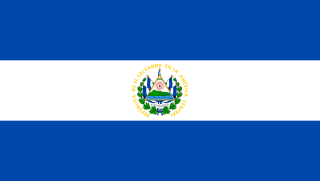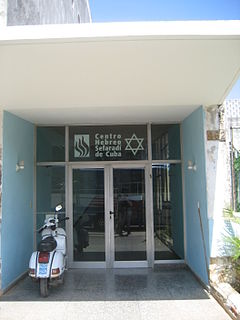
The Romaniote Jews or Romaniotes are an ethnic Jewish community native to the Eastern Mediterranean. They are generally one of the oldest Jewish communities in existence and specifically the oldest Jewish community in Europe. Their distinct language was Judaeo-Greek, a Greek dialect that contained Hebrew along with some Aramaic and Turkish words but now speak modern Greek or the languages of their new home countries. They derived their name from the old name for the people of the Byzantine Empire, Romaioi. Large communities were located in Thebes, Ioannina, Chalcis, Corfu, Arta, Preveza, Volos, Patras, Corinth, and on the islands of Zakynthos, Lesbos, Chios, Samos, Rhodes, and Cyprus, among others. The Romaniotes are historically distinct and still remain distinct from the Sephardim, who settled in Ottoman Greece after the 1492 expulsion of the Jews from Spain.

Cochin Jews, also called Malabar Jews, are the oldest group of Jews in India, with possible roots that are claimed to date back to the time of King Solomon. The Cochin Jews settled in the Kingdom of Cochin in South India, now part of the state of Kerala. As early as the 12th century, mention is made of the Jews in southern India. The Jewish traveler Benjamin of Tudela, speaking of Kollam (Quilon) on the Malabar Coast, writes in his Itinerary: "...throughout the island, including all the towns thereof, live several thousand Israelites. The inhabitants are all dusky and semitic facial features, and the Jews also. The latter are good and benevolent. They know the law of Moses and the prophets, and to a small extent the Talmud and Halacha." These people later became known as the Malabari Jews. They built synagogues in Kerala beginning in the 12th and 13th centuries. They are known to have developed Judeo-Malayalam, a dialect of Malayalam language.
The history of the Jews in Latin America began with conversos who joined the Spanish and Portuguese expeditions to the continents. The Alhambra Decree of 1492 led to the mass conversion of Spain's Jews to Catholicism and the expulsion of those who refused to do so. However, the vast majority of Conversos never made it to the New Word and remained in Spain slowly assimilating to the dominant Catholic culture. This was due to the requirement by Spain's Blood Statues to provide written documentation of Old Christian lineage in order to travel to the New World.

The United Synagogue is a union of British Orthodox Jewish synagogues, representing the central Orthodox movement in Judaism. With 64 congregations, comprising 40,000 members, it is the largest synagogue body in Europe. The spiritual leader of the union bears the title of Chief Rabbi of Britain and the Empire – a title that bears some formal recognition by the Crown, even though his rabbinical authority is recognised by only slightly more than half of British Jews.

The Paradesi Synagogue is the oldest active synagogue in the Commonwealth of Nations, located in Kochi, Kerala, in South India. Constructed in 1567, it is one of seven synagogues of the Malabar Yehudan or Yehudan Mappila people or Cochin Jewish community in the Kingdom of Cochin. Paradesi is a word used in several Indian languages, and the literal meaning of the term is "foreigners", applied to the synagogue because it was built by Sephardic or Spanish-speaking Jews, some of them from families exiled in Aleppo, Safed and other West Asian localities. It is also referred to as the Cochin Jewish Synagogue or the Mattancherry Synagogue.

Bevis Marks Synagogue, officially Qahal Kadosh Sha'ar ha-Shamayim, is the oldest synagogue in the United Kingdom in continuous use. It is located off Bevis Marks, in the City of London.
Jewish Cubans, Cuban Jews, or Cubans of Jewish heritage, have lived in the nation of Cuba for centuries. Some Cubans trace Jewish ancestry to Marranos who came as colonists, though few of these practice Judaism today. More than 24,000 Jews lived in Cuba in 1924, and more immigrated to the country in the 1930s. But during and after the 1959 communist revolution, 94% of the Jews left for the United States and other countries In 2007 an estimated 1,500 known Jewish Cubans remained in the country, overwhelmingly located in Havana., occasionally called Jubans as a portmanteau of the English word "Jew" and Cuban. Several hundred have since emigrated to Israel.
The history of the Jews in Indonesia began with the arrival of early European explorers and settlers, and the first Jews arrived in the 17th century. Most of Indonesian Jews arrived from the Netherlands, Middle East, Northern Africa and Southern Europe. Jews in Indonesia presently form a very small Jewish community of about 100-500, of mostly Sephardi Jews.

Temple Beth Shmuel or Cuban Hebrew Congregation of Miami is a synagogue used by Ashkenazi Jewish Cuban expatriates in Miami Beach, Florida. The synagogue was co-founded in 1961 by Felix Reyler, Oscar White and Bernardo Benes and its current location opened in 1975, with an expansion in 1982. The congregation is led by Rabbi Stephen Texon and Baal Koreh Jacques Malka. It currently hosts 170 member households with a Montessori School. As of 2011, there are some 2,500 Cuban Jewish households in Miami.

Jews have been present in El Salvador since the early 19th century, starting with Spaniard Sephardic Jews and continuing with the arrival of World War II Ashkenazi refugees. Jews who escaped Spain during the inquisition were Jewish Sephardic, hence, a significant number of Jewish families in El Salvador have Hebrew hispanized sounding last names. Some of these Sephardic Jewish families include: Aboud, Acevedo, Acosta, Aguilar, Albuquerque, Almeida, Alonzo, Altamirano, Araujo, Campos, Canizalez, Cantoral, Cordova, Cattán, Cuadra, Cubas, Díaz, Dreyfus, Escalante, Espinosa, Figuereido, Figueroa, Gabay, López, Núñez, Salomón, Sangarrén, Sariles, Taer, Taher, Taheri. Among some of the most prominent Ashkenazi Salvadoran families are: Liebes, Guttfreund, Weill, Salomón, Freund, Lasally, Gabay, Bloch, Baum, Levy, Lewinsky, Haas, Dreyfus, Rothschild, Tesak, Bernhard, Bloom and Falkenstein.

The Great Synagogue of Gibraltar, also known as Kahal Kadosh Sha'ar HaShamayim, is located in the British overseas territory of Gibraltar, and was the first synagogue on the Iberian Peninsula to operate since the expulsions from Spain and Portugal in 1492 and 1497 respectively.

Adath Israel, located in Havana, is the only Orthodox synagogue in Cuba.

The Centro Hebreo Sefaradi Synagogue, a synagogue located in Havana, is affiliated with the United Synagogue of Conservative Judaism.
Communidad Hebrea Hatikva, a synagogue located in Santiago de Cuba, is the first Jewish congregation to host a website in Cuba.

The Jewish immigration to Puerto Rico began in the 15th century with the arrival of the anusim who accompanied Christopher Columbus on his second voyage. An open Jewish community did not flourish in the colony because Judaism was prohibited by the Spanish Inquisition. However, many migrated to mountainous parts of the island, far from the central power of San Juan, and continued to self-identify as Jews and practice Crypto-Judaism.
The history of the Jews in South Florida dates back to the early 19th century. Many South Florida Jews are Ashkenazi, and many are also Cuban, Brazilian, Latin American, Russian, French, Moroccan, Syrian, Bukharian, and Israeli. There is a significant Sephardic and Mizrachi population as well.

Magen David, or the Shield of David, Synagogue is located at the junction of Brabourne Road and Canning Street in Kolkata. Magen David is the second operating synagogue in Kolkata, the other is the Beth El Synagogue at Pollock Street.

The history of the Jews in Suriname starts at least in the 17th century, when in 1639, the English government allowed Spanish and Portuguese Jews from the Netherlands, Portugal and Italy to settle the region, coming to the old capital Torarica. In 1652, a new group that migrated under the leadership of Francis Willoughby, 5th Baron Willoughby of Parham came to Suriname and settled in the Jodensavanne area. A third group came 1664, after their expulsion from Recife and then French Guiana, led by David Cohen Nassy. According to the Encyclopedia of Latin America, "Suriname was one of the most important centers of the Jewish population in the Western Hemisphere, and Jews there were planters and slaveholders."















